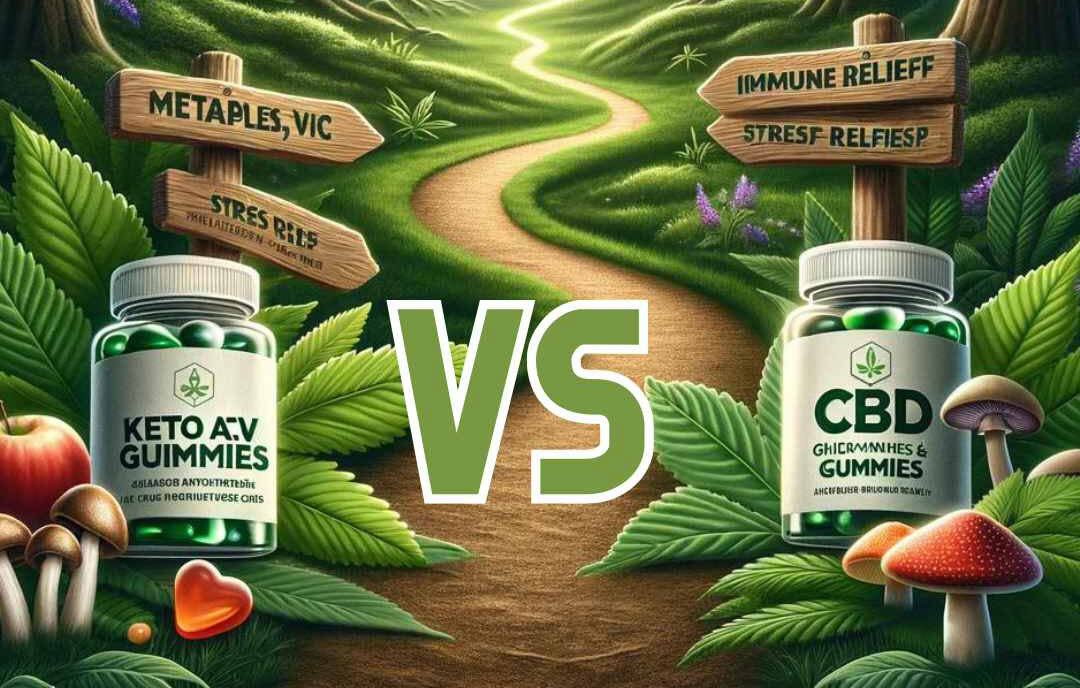Allergy season will soon be upon us again. Here comes the not-so-fun part of Spring being right around the corner....
If you’re familiar with seasonal allergies, then you definitely know what I’m talking about. The weather is warming up, “spring is in the air”, the birds are chirping...but you can’t quite enjoy it because you’re constantly sneezing and itching your eyes!
10-30% of the global population is affected by seasonal allergies. This means that tens of millions across the globe experience allergies in one sort or another. Physicians, pulmonologists, clinicians, and specialists are just some of the few that are concerned with the increasing percentages of individuals who experience allergies today.
Standard decongestants, nasal sprays, and over-the-counter medications not working for you? Well, don’t lose hope just yet! There’s a natural, holistic alternative that may help those seasonal allergies, and who, nonetheless, then the lovely cannabis plant. Studies are showing that cannabis can help lessen the effects.
In today’s article, we’ll discuss some of the conventional and natural approaches to alleviating allergies as well as what the research is saying about the effects of cannabis on allergic reactions.
1, 2, achoo!

HEMP, THE ENDOCANNABINOID SYSTEM, AND CBD FOR ALLERGIES
The endocannabinoid system (ECS) is involved in numerous pathologies within the body. Receptors in the ECS, also known as endocannabinoid receptors, are located in the pain and inflammatory processing areas of the brain. Phytocannabinoids, for instance, modulate inflammatory responses within the body by regulating the production of cytokines (aka phytocannabinoids may help reduce inflammation).
Several recent studies point to the importance of modulating the ECS and the use of CBD oil as a potential therapy for allergies. So why haven’t we heard about this yet? Can CBD really reduce allergies? First, let’s talk about conventional allergy medications and their adverse effects.
HOW ALLERGIES WORK 101
By definition, an allergy is a misguided reaction to a foreign substance by the immune system. Allergies are the body’s way of protecting itself from invaders. However, allergic reactions can often be caused by harmless substances. Whether it’s a tiny piece of dust or pollen or something larger, like mold or grass, the body reacts - producing specialized antibodies to attack the “invader”. When antibodies are attacking the “invader”, this is when you may develop sneezing, watery eyes, inflammation, wheezing, or itchiness.
So when do you become allergic? According to John Hopkins Medicine, a person becomes allergic to something once their body has developed antigens against that substance. These allergic reactions begin in your immune system. The immune system consists of complex networks of cells and organs that work to protect the body from infection. You can think of your immune system as your own personal team of bodyguards, keeping you safe and away from harm.
This isn’t a small issue or one that should be overlooked. It is estimated that 40% of the world’s population has allergic responses to foreign substances in their everyday environment.
ALLERGY MEDICATIONS
The allergies kick in not of nowhere and you’re not prepared. So you head to your local market for some allergy medication to help ease the sneezing and wheezing (hopefully). There are numerous over-the-counter (OTC) medications and prescriptions available to treat allergy symptoms. These allergy drugs include antihistamines, decongestants, and others to just name a few.
ANTIHISTAMINES

When you’re exposed to an “invader” or allergen, for instance, it triggers your immune system into a defense survival mode. The immune system consists of mast cells that release histamine. Histamine attaches to receptors in the blood vessels, resulting in larger blood vessels. These histamines can attach to other receptors causing itching, redness, and swelling.
However, by blocking these histamines from attaching onto nearby receptors, antihistamines can help prevent these symptoms from occurring or worsening. Commonly used OTC antihistamines are as follows:
- Zyrtec
- Allegra
- Xyzal
- Claritin
- Alavert
- Benadryl
ANTIHISTAMINE SIDE EFFECTS
These OTC antihistamines may help alleviate some of your symptoms over time, but there are some serious side effects associated.
- Drowsiness
- Dizziness
- Nausea
- Vomiting
- Restlessness
- Moodiness
- Blurred vision
- Confusion
- Dry mouth
DECONGESTANTS
Decongestants may help relieve congestion caused by allergies. There are often prescribed as antihistamines. You can find decongestants in multiple forms: eye drops, nasal sprays, liquids, or pill forms. Common OTC decongestants are:
- Sudafed
- Afrin
- Privine
- Visine eye drops
- Neo-Synephrine
DECONGESTANT SIDE EFFECTS
Nasal decongestants may lead to a slew of potential adverse effects.
- Stinging
- Burning
- Sneezing
- Dryness
- Irritation
- High blood pressure
- Rapid heartbeat
- Anxiety
- Dizziness
DOES CBD OIL HELP REDUCE ALLERGIES
Some researchers may say “yes”. Cannabis may be helpful when it comes to reducing allergy symptoms. So what does the scientific research tell us about CBD and allergies? Unfortunately, there aren’t enough studies to say confidently that CBD can help with your allergies (yet). However, there are studies that support the idea and notion that cannabinoids can help play a role in reducing your allergies. Here are the cold, hard research facts:
CBD OIL AND HISTAMINES
One of the many ways that cannabis can help your allergies is through a reduction of the histamine released into your blood vessels. Histamine, as we discussed above, is released and triggered by your antibodies. So if we prevent or reduce the histamine from being released, this can make a huge difference! CBD oil can help in reducing the antibodies that trigger the histamine response.
A 2005 anti-inflammatory and cannabis study suggested that cannabis can help prevent an increased histamine response. Researchers found that exposure to tetrahydrocannabinol, THC, the psychoactive component of cannabis, could reduce mast cell activation. By reducing mast cell activation, there is less release of histamine to trigger allergic reactions.
This 2005 study concluded that THC may lead to reduced mast cell activation, leading to a reduction in the release of histamine, leading to possible prevention or reduction in the severity of your allergies.
For instance, a study published in the Journal of Leukocyte Biology suggested that cannabinoids impaired the activation of T-cells, a type of white blood cells. Since T-cells increase antibody activation and response, this leads to an increase in histamine, thus, leading to allergic reactions.
But, by impairing this activation, cannabinoids were able to reduce the antibody response and helped reduce allergy symptoms.
The terpenes present in cannabis have been shown to help too! A 2014 allergy study concluded that alpha-pinene, a terpene found in cannabis, can help reduce antibody levels. The animal study consisted of mice who were treated with terpenes and mice who were treated with a vehicle. Mice who were terpene-treated showed a decrease in clinical allergy symptoms as well as significantly lower levels of nasal antibodies that trigger histamine.
Mice treated with cannabinoids with terpenes showed decreased allergy symptoms.
CANNABIDIOL AND ALLERGIES: FINAL THOUGHTS
While conventional allergy medications are commonly recommended or prescribed, all-natural, holistic alternatives aren’t quite there yet. Over the last 20 years, cannabinoid research and its effects on allergic reactions are making headway. CBD has been suggested to impair antibody responses and decrease allergy symptoms.
Until more research emerges and brings forth further findings of CBD oil and its allergy-reducing benefits, allergy sufferers will have to hold promise to the current research findings.
Curious about what Nanocraft Sciences has to offer? Keep reading!
HOW TO USE
New to CBD? check out the related link to the new user guide.
Cannabinoid Options of Application:
Transdermal (Skin)-Topical Salve: This application is typically used for acute and direct application. Such as an ankle sprain, arthritis, tendonitis, plantar fasciitis, carpal tunnel, tennis elbow, fibromyalgia, and migraines. Full-spectrum salves provide a whole panel of cannabinoids for increased potency.
Edible CBD Applications:
CBD Oil Tinctures:
Tincture oils are utilized in full-spectrum form (whole plant derived) and Isolated forms (Pure CBD) that are applied directly under the tongue or mixed in water. This form is typically used for direct application to the central nervous system and the entire body for ailments like anxiety, stress, epilepsy, insomnia, sleep disorders, depression, PTSD, autoimmune responses, ADHD, cancer, systemic inflammatory disease such as cardiovascular disease, diabetes and metabolic syndrome. All applications are available as CBD isolate, broad spectrum and full spectrum.
CBD Soft Gel Capsules:
Full-spectrum soft gels essentially have the same application as tincture oils. The difference is that each soft gel is measured to a specific milligram to provide a consumer with a perfectly measured dose of CBD. This would be used for any ailments one might use CBD for, including all the ones listed above.
Check out our other posts for more information!
- Using CBD Oil For Memory
- Can CBD Oil Have Negative Effects
- CBD And Traveling What you need to know become packing it for the plane
- CBD Oil Or CBD Topical Cream, Whats Best For You?
* DISCLAIMER: The information in this article is for educational purposes only. It does not exploit or provide medical advice of any kind. Therefore, any reliance you place on the information below is strictly at your own risk. Please check with your medical provider before starting or changing a CBD routine.
Sources:
- Lu H, Kaplan BLF, et al. Suppression of T cell costimulator ICOS by 9-tetrahydrocannabinol. Journal of Leukocyte Biology. 2009.
- Nam S, Chung C, et al. The therapeutic efficacy of α-pinene in an experimental mouse model of allergic rhinitis. International Immunopharmacology. 2014.
- Petrosino S, Verde R, Vaia M, et al. Anti-inflammatory properties of cannabidiol, a nonpsychotropic cannabinoid, in experimental allergic contact dermatitis. The Journal of Pharmacology and Experimental Therapeutics. 2018.
- Small-Howard AL, Shimoda LMN, et al. Anti-inflammatory potential of CB1-mediated cAMP elevation in mast cells. Journal of Biochemistry. 2005.
Kirsten Thornhill, MSNanocraft SciencesContent Writer x Physiologist x ResearcherKirsten Thornhill was born and raised in a small farm town in Stanislaus County, California. Kirsten graduated with a Master of Science degree in exercise physiology from Point Loma Nazarene University in San Diego, CA. She is very passionate about human physiology and the metabolic and nutritional adaptations that occur during exercise in active individuals and athletes. Kirsten has specialized in maximal oxygen consumption testing in athletes and teaching laboratory, clinical, practical, and research applications of exercise testing to college students. She enjoys educating and informing people on the importance of lifetime movement, plant-based eating, and health research and development. Her passion for natural, lifestyle medicine enables her to strive when promoting health and education.














No comments yet!
Be the first to comment